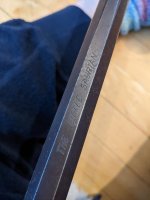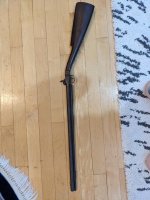OP
Souffaloufagous
Member
- Joined
- Apr 10, 2023
- Messages
- 12
- Reaction score
- 153
omg it's funny you say this - he LOVED making art repros from different time periods. He liked to think of it as a prank because he'd try to convince people he had the genuine article!I spent the decade of the 1970's as a "picker" of antique guns at a time when most of the dealers in antique guns used Al for high end repairs and restoration. I had him repair the frame of a Wolf engraved 1851 Colt navy that had a nasty rust spot on the cylinder and recoil shield on the left side. The repair was perfect and could not be told from the patina on the original surfaces. He was superb at re-creating the classic engraving styles of the flint, percussion and cartridge eras before WW2. A very gifted man. IrishFritz









